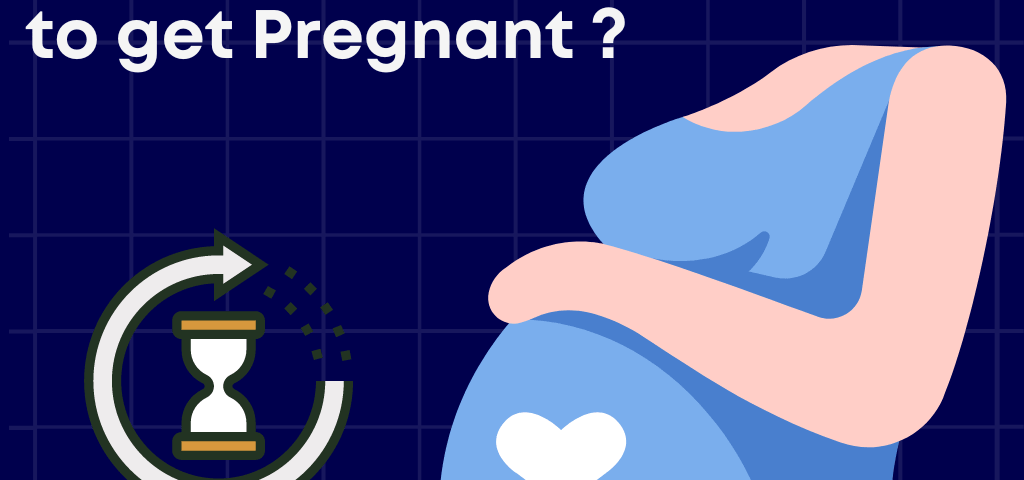
How Many Weeks Pregnant Am I After IVF?
April 19, 2025
Does Kaiser Permanente Cover IVF? Your Ultimate Guide to Understanding Fertility Coverage
April 19, 2025How Long Does IVF Take to Get Pregnant?

How Long Does IVF Take to Get Pregnant?
If you’re thinking about in vitro fertilization (IVF), one of the first questions that might pop into your mind is, “How long will this take?” It’s a big journey—emotionally, physically, and even financially—so knowing what to expect can make all the difference. IVF isn’t a quick fix, but it’s helped millions of people build families when nature needed a little nudge. Let’s walk through the process together, break it down step by step, and dig into the details—some you won’t find in the usual guides—so you can feel ready for what’s ahead.
The Big Picture: What’s the Timeline Like?
IVF isn’t a one-day deal. From the moment you start until you’re holding a positive pregnancy test, you’re looking at a process that typically spans 4 to 6 weeks for one cycle. But here’s the catch: that’s just the active part. The full timeline—including prep, waiting, and testing—can stretch longer, depending on your body, your doctor’s plan, and whether you get pregnant on the first try. About 50% of women under 35 see success after one cycle, according to the CDC’s 2021 data, but for others, it might take a few rounds, adding months to the journey.
Think of it like planting a garden. You don’t just toss seeds in the dirt and expect flowers overnight. You prep the soil, water it, and wait for sprouts. IVF is similar—your body needs time to grow eggs, and then there’s the magic of turning those eggs into embryos. Let’s break it into chunks so you can see how it all fits together.
Step 1: Getting Ready—Before the Cycle Even Starts
Before you dive into IVF, there’s a prep phase. This isn’t always counted in the “official” 4-6 week timeline, but it’s crucial. Picture it as the warm-up before a big game. You’ll spend 2 to 4 weeks (sometimes more) meeting with your doctor, doing tests, and maybe tweaking your lifestyle. Here’s what happens:
- Health Check: Your doctor will run blood tests to check hormone levels—like follicle-stimulating hormone (FSH) and anti-Müllerian hormone (AMH)—to see how many eggs your ovaries might produce. They’ll also do an ultrasound to peek at your ovaries and uterus.
- Sperm Prep: If you’re using a partner’s sperm, they’ll need to give a sample for testing. If it’s a donor, that gets arranged now.
- Lifestyle Tune-Up: Doctors often suggest cutting caffeine, quitting smoking, and eating well. A 2023 study from the American Society for Reproductive Medicine found that women who ate more fruits and veggies had a 10% higher success rate in IVF cycles.
This prep can feel slow, but it’s setting the stage. Some clinics even put you on birth control for a couple of weeks to sync your cycle—ironic, right? It helps control timing so your ovaries are ready when the real work starts.
Pro Tip: Start a Countdown Calendar
Grab a notebook or app and mark key dates—consultations, tests, and the start of meds. It keeps you grounded when things feel overwhelming.
Step 2: Boosting Your Eggs—Ovarian Stimulation
Now the cycle officially begins. For 10 to 14 days, you’ll take hormone shots to make your ovaries produce multiple eggs. Normally, your body releases one egg a month, but IVF needs more to up your chances. Here’s the rundown:
- The Shots: You’ll inject hormones like FSH or a combo drug daily. They tell your ovaries, “Hey, let’s make a bunch of eggs!” Some women feel bloated or moody—totally normal.
- Check-Ins: Every few days, you’ll visit the clinic for ultrasounds and blood tests. Doctors watch your follicles (the sacs where eggs grow) to see if they’re hitting the sweet spot—about 18-20 millimeters.
- Trigger Time: When your eggs are ready, you get a final shot (usually hCG) to ripen them up. This happens about 36 hours before retrieval.
This phase is intense—daily shots and appointments—but it’s where the magic starts. A 2024 study from Yale Medicine showed that women producing 8-15 eggs had the best balance of success without overdoing it.
What Nobody Tells You: The Emotional Rollercoaster
Those hormones? They can mess with your head. One minute you’re fine, the next you’re crying over a dog commercial. Lean on a friend or join an online IVF group—trust me, you’re not alone.
Step 3: Egg Retrieval—Harvest Day
About 36 hours after the trigger shot, it’s go-time. Egg retrieval is a quick procedure—20-30 minutes—done under light sedation. Here’s how it works:
- The Process: A doctor uses an ultrasound-guided needle to pull eggs from your ovaries through your vagina. It sounds wild, but you won’t feel much.
- Recovery: You’ll rest for an hour or two after. Some cramping or spotting is common, but most people are back to normal the next day.
You might get 10-15 eggs, though it varies. The number doesn’t guarantee success—it’s about quality, too. Fun fact: the first IVF baby, Louise Brown, came from just one egg in 1978. Today, we play the odds with more.
Quick Quiz: How Many Eggs Are Enough?
- 5 or fewer: Lower chance, but still possible.
- 6-15: Sweet spot for most.
- 16+: Great, but watch for overstimulation risks.
What’s your guess for your cycle? Chat with your doctor to get a feel for your numbers.
Step 4: Fertilization and Embryo Growth—The Lab Magic
While you’re resting, the lab team gets busy. Over the next 3-5 days, your eggs meet sperm—either mixed naturally or with a technique called ICSI (where one sperm is injected into each egg). Here’s what’s happening:
- Day 1: They check if fertilization worked. A good egg turns into a two-cell embryo.
- Day 3: Embryos have 6-8 cells. Some stop here for transfer.
- Day 5: The best ones reach the blastocyst stage—about 100 cells. These have a higher implantation rate.
Not all eggs make it. If you start with 10, maybe 6-8 fertilize, and 3-4 become strong embryos. The rest? They might not grow, which is tough but normal.
Fresh vs. Frozen: A Hidden Choice
Most people think IVF means a fresh transfer right away, but frozen embryos are gaining ground. A 2023 study from NYU Langone found frozen transfers had a 5-10% higher success rate because your body gets a break before implantation. Something to ask your doctor about!
Step 5: Embryo Transfer—The Big Moment
About 3-5 days after retrieval, one or two embryos go into your uterus. It’s a simple procedure—no anesthesia needed:
- How It Goes: A thin catheter slides through your cervix, guided by ultrasound. You might feel mild cramps, like a Pap smear.
- Rest Up: Some doctors suggest lying down for 20 minutes after, but studies say it’s not a must.
This is the moment you’ve been waiting for—the chance for those embryos to snuggle into your uterus and grow. Success depends on embryo quality, your age, and a bit of luck.
Insider Tip: The Pineapple Trick
Some IVF moms swear by eating pineapple core (it’s got bromelain, which might help implantation). No hard proof, but it’s a fun ritual to try!
Step 6: The Two-Week Wait—Nail-Biting Time
Now you wait—9 to 14 days—for a blood test to check for pregnancy. This “two-week wait” (TWW) is infamous for driving people up the wall. Your body might feel different—sore breasts, fatigue—but those could be from meds, not pregnancy. Here’s how to survive:
- Stay Busy: Binge a show, knit, or walk your dog. Distraction is key.
- Test Smart: Skip home tests early—they can give false hope or heartbreak. Wait for the blood test for the real deal.
If it’s positive, congrats—you’re pregnant! If not, it’s okay to grieve. About 40% of first cycles fail, per the CDC, but many succeed later.
Poll: How Did You Pass the TWW?
- Netflix marathon
- Stress baking
- Obsessive Googling
- Share your trick in the comments!
What If It Takes Longer? Multiple Cycles Explained
One cycle might not be enough. If you’re over 35 or have tricky fertility issues—like endometriosis or low egg count—you might need 2-3 cycles, stretching the process to 3-6 months or more. Each cycle repeats the steps, but with tweaks:
- Adjust Meds: Maybe more hormones or a different mix.
- Frozen Embryos: If you banked extras, you skip retrieval and jump to transfer.
A 2024 report from the Human Fertilisation and Embryology Authority says the average couple needs 2.5 cycles to get pregnant. Cost adds up—about $12,000-$20,000 per round—so it’s a marathon, not a sprint.
The Overlooked Factor: Your Age
Age is the biggest player. Under 35? You’ve got a 46% live birth rate per cycle (CDC, 2021). Over 40? It drops to 7-8%. Don’t let that scare you—options like donor eggs can boost your odds.
Beyond the Basics: Three Things You Haven’t Heard Enough About
Most IVF guides stick to the timeline and steps, but there’s more to know. Here are three angles that don’t get enough airtime—and they could change your game plan.
1. The Power of Your Gut Health
Your gut might not seem linked to IVF, but a 2023 study from Cleveland Clinic suggests it is. Women with balanced gut bacteria had a 15% higher implantation rate. Why? Inflammation from an off-kilter gut can mess with your uterus. Try this:
- Eat Probiotics: Yogurt, kefir, or supplements.
- Cut Sugar: It feeds bad bacteria.
- Ask Your Doc: Some clinics now test gut health pre-IVF.
2. The Mental Prep Nobody Talks About
IVF is a mind game. A 2024 University of Iowa study found that women who did mindfulness or therapy during IVF had a 12% higher success rate. Stress hormones like cortisol can mess with implantation. Here’s how to chill:
- Meditate: 10 minutes a day—just breathe.
- Journal: Write your fears; it lightens the load.
- Partner Up: Couples who talk it out cope better.
3. The Freeze-All Strategy
Instead of transferring embryos right away, some doctors freeze them all and wait a cycle. Why? Your body recovers from hormone overload, and the uterus gets cozier. A 2023 Mayo Clinic review found this boosted success by 8% for women with PCOS. It’s not standard yet, but worth a chat with your team.
Real Stories: Timing in Action
Let’s meet two women who’ve been there—names changed, stories real.
- Jess, 32: One cycle, 5 weeks from start to positive test. “I got lucky—12 eggs, 3 good embryos, and it worked first try. The wait was the hardest part.”
- Maria, 39: Three cycles, 7 months total. “First two failed—one no embryos, one didn’t stick. Third time, we used a frozen transfer, and now I’ve got twins!”
Their paths show how different this can be. Your story? It’s still unfolding.
Crunching the Numbers: A Simple IVF Timeline Breakdown
Here’s a table to see it all at a glance:
| Phase | Time | What Happens |
|---|---|---|
| Prep | 2-4 weeks | Tests, planning, maybe birth control |
| Stimulation | 10-14 days | Shots, egg growth, checkups |
| Retrieval | 1 day | Eggs collected |
| Embryo Growth | 3-5 days | Fertilization, embryo development |
| Transfer | 1 day | Embryos placed in uterus |
| Two-Week Wait | 9-14 days | Waiting for pregnancy test |
| Total (1 Cycle) | 4-6 weeks | Start to test result |
Add cycles as needed—each one’s a fresh shot.
Your IVF Action Plan: Tips to Speed Things Up
Want to make this as smooth as possible? Here’s your cheat sheet:
- ✔️ Pick a Great Clinic: Look at success rates on SART.org—they vary wildly.
- ❌ Don’t Skip Prep: Rushing tests can miss issues that tank your odds.
- ✔️ Ask About Frozen: It might stretch the timeline but boost success.
- ❌ Avoid Stress Traps: Over-researching every twinge just fuels anxiety.
- ✔️ Budget Time: Plan for 2-3 cycles if you’re over 35—it’s common.
The Latest Buzz: What’s New in 2025?
IVF’s always evolving. Here’s what’s trending as of April 2025:
- AI Embryo Picks: Clinics use artificial intelligence to spot the best embryos, upping success by 5-7%, per a Stanford study.
- Gentler Meds: New long-acting shots mean fewer injections—less hassle, same results.
- Social Media Hype: X users are raving about cherry blossom season, but IVF folks are swapping TWW tips—distraction’s the name of the game.
Wrapping It Up: Your Journey, Your Pace
So, how long does IVF take to get pregnant? One cycle’s about 4-6 weeks, but your real timeline depends on you—your age, your body, your luck. It’s not a straight line, and that’s okay. Whether it’s one round or three, every step’s a move toward your goal. Arm yourself with knowledge, lean on your people, and take it day by day. You’ve got this—and maybe soon, you’ll have that little someone, too.
Got a question or a story to share? Drop it below—I’d love to hear where you’re at!

